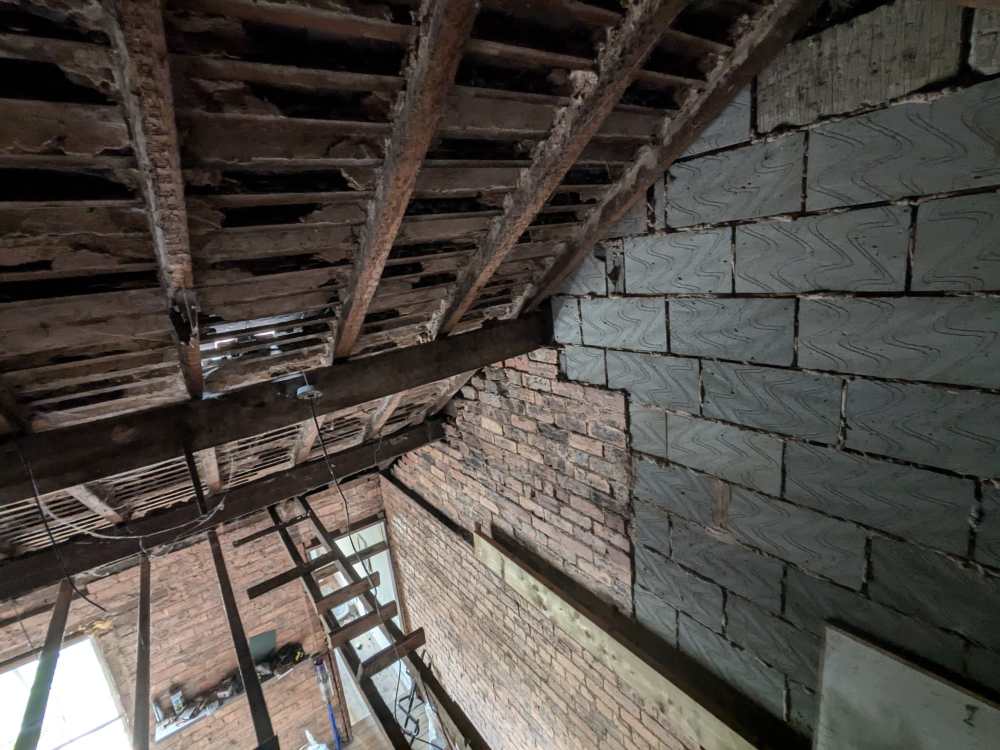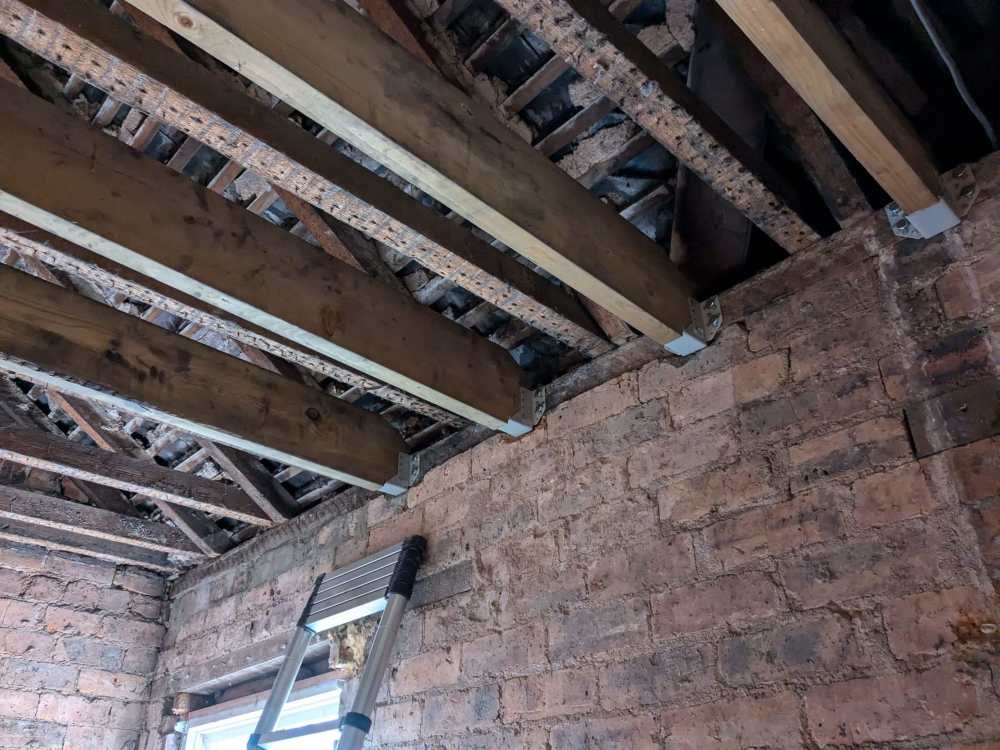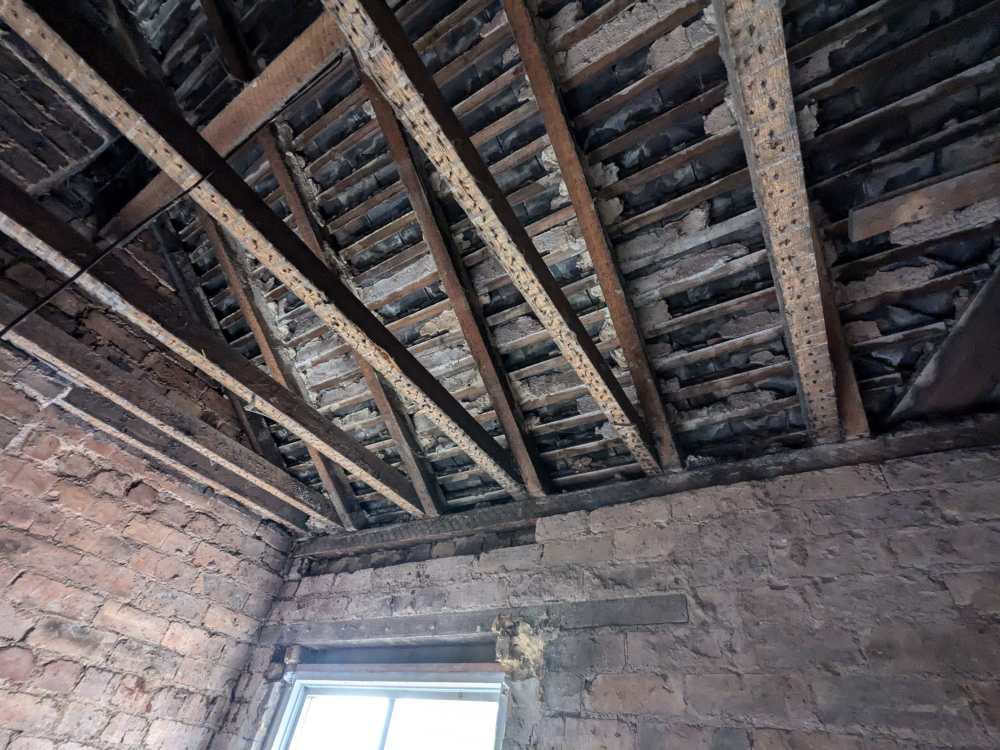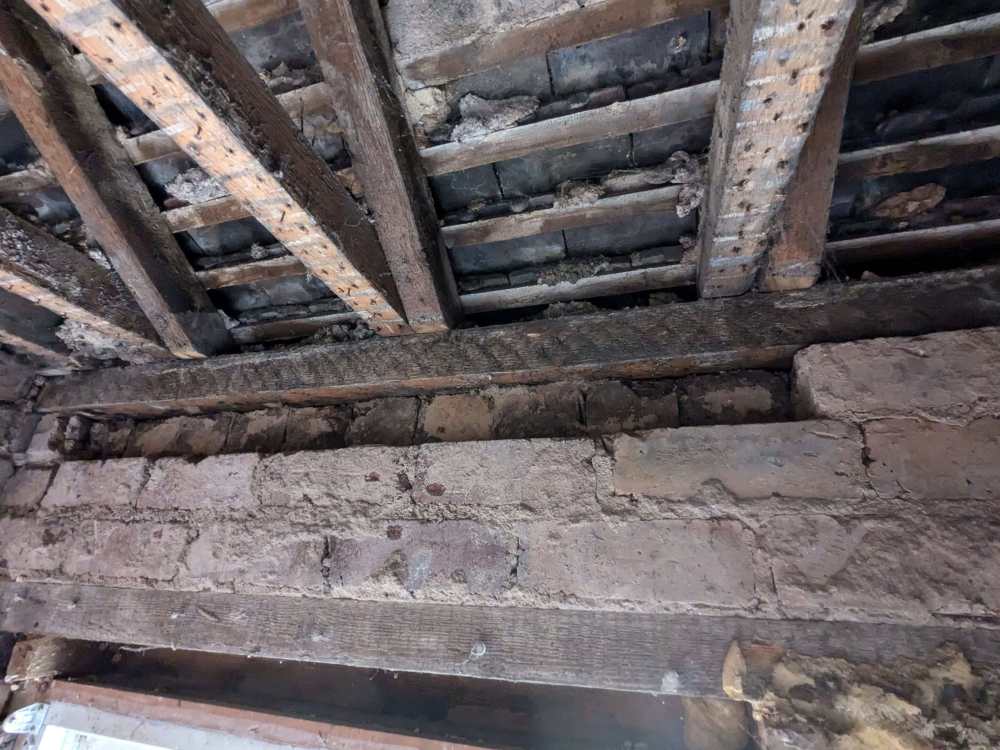-
Posts
13 -
Joined
-
Last visited
Recent Profile Visitors
The recent visitors block is disabled and is not being shown to other users.
timber's Achievements

Member (3/5)
3
Reputation
-
As you can see in my other posts, I have a back to brick property (my home) that I'm renovating and remodelling. I have lots of time but not much money and so I'm trying to self-build as much as I can within the regulations. One place where I'm struggling to find detailed information is box dormer construction. I'm at the stage where I have a way forward for the floor and the main load bearings (ridge steel and another under the dormer face set back from the eaves), with an SE ready to do the calcs, and I'm looking to design the timber structure. Does anyone have any advice on where to learn about this part of the construction? Timber thickness, spacings, where to double up, techniques for tying in the front roof plane etc. Any good books/websites/videos?
-

Is a dormer possible with thin attic party wall?
timber replied to timber's topic in Lofts, Dormers & Loft Conversions
Thanks for pointing this out. It makes sense - his first detailed suggestion was to build up the party wall with brick from the new concrete lintels, which I guess would avoid the point loads. It was my probably wrong assumption that the same concrete lintels would be used for the second idea he came up with that I described in my post. -

Is a dormer possible with thin attic party wall?
timber replied to timber's topic in Lofts, Dormers & Loft Conversions
Speaking to a structural engineer, he confirmed the party wall in the attic would not be suitable for supporting the end of a steel ridge beam. But it seems there's a way forward. This is a typical no-frills 3.6m wide Victorian terrace with a staircase going across the house in the middle, with brick walls either side of the stairs going right up to the roof ties. There are wooden lintels over the doorways at either side at the top of the stairs, that are supported by the party wall at one end and the stairway walls at the other. He's suggested replacing them with concrete lintels subject to calculations, placing a short beam along the party wall bridging the two lintels, and using this beam to support a post that will support the party wall end of the new ridge beam. He also suggested a beam running from each side of the house directly a floor below the steel ridge beam (i.e. first floor ceiling level) and support the support post on that which would be useful for houses in a similar party wall situation that don't have the 2-storey brick walls across their middle. -

Is a dormer possible with thin attic party wall?
timber replied to timber's topic in Lofts, Dormers & Loft Conversions
I'll likely be sand and cementing the wall to ensure there's no direct pathways for sound, then adding an isolated stud wall in front of it to get around the noise. There's no need for planning permission to build a rear dormer - it's permitted development: https://ecab.planningportal.co.uk/uploads/miniguides/lofts/Lofts.pdf I'm assuming I don't have enough bearing on a load bearing wall to make it possible, but I'm asking just in case anybody knows otherwise. I'll also be speaking to a structural engineer and I'll report back their opinion here. -
I'm in the middle of a loft conversion, and would really like to add a rear dormer if possible. However, the house is a standard 1920's Victorian end-of-terrace, and the party wall is not very thick. It's 9" solid brick up to the ceilings of the first floor, but then above that changes to 4.5" brick at the front and rear to support the purlins, and the middle was originally straight through to next door but has since been filled with what must be 100mm cinder blocks. Next door have converted their loft (no dormer) and have plaster boarded straight onto the other side. Does anyone think a dormer will still be possible due to the additional beam needed in the ridge? Will I have enough bearing if I cut into the cinder blocks? If not, are there any workarounds?
-
In case anyone's interested, in the end I decided to install some new 8"x2" joists @ 18" centres (3.6m span) between the existing roof ties and hang them from the wall plate with heavy duty hangers. Because the nailing area was limited (I couldn't get in above the wallplate) I chose some hangers that allowed me to fit 14 nails along with 4x M10 80mm coach screws.
-
I think what I'm going to do is simply double up the roof ties instead with some additional 3x2 timbers sistered to them above with glue and screws, and then board on top of that. That will give provide 6" of cavity for heavy wool insulation between the bedroom below and roof space, some basic cold/dusty storage in the roof space and doesn't involve lowering the nice high ceilings in the bedroom which I'd like to keep. As is typical for standard terraced houses with staircase across the middle, the middle of the roof space's floor is supported by two 4.5" brick walls that go right down to the foundations, so plenty of support in the middle which is where the most head room is in case I ever fit insulation below the tiles and add a desk etc.
-
Thanks, I'll cross the insulation bridge when I come to it - if the attic ends up either too cold, or too low depending on the insulation then I'll just use it for storage. My main priority right now is to put a ceiling up for the room below but I need to consider it's thermal and acoustic insulation at the same time (the neighbours have an attic room and the sound comes right through into my attic). I could throw up some plasterboard and then roll out some insulation out on top, but it would a) get absolutely filthy from all the mortar dust from the tiles b) not really offer any kind of sound insulation from the neighbours attic. I thought that if I at least just installed some joists now before ceiling goes up below, I could put some OSB flooring down above, and install some heavy wool slabs between the joists. At least that way the dust from the tiles would be contained and easily swept up, I'd add some decent storage space and it would help to sound insulate the bedroom below from next door's attic.
-
I'm looking to put a floor down in my attic to form a storage room/office. It only has 3"x2" roof ties spanning 3.7m which are barely enough to hold up the ceiling and so I was hoping to put some more substantial joists in between them onto which I'll lay some OSB flooring above and hang the ceiling from below. Although I'm not necessarily going to build this to regulations, it looks as though 8"x2" at 400mm might just about meet regs for spanning 3.7m, but I'm not sure of the best way to hang them. On one side there's an internal 4.5" brick wall and at the other there's a 9" external brick wall which is slightly interesting as the top course of bricks at one end are set back ~2.5" to form an aesthetic detail on the outside. Also at the midpoint of the wall (far right of the photos), the bricks aren't flush with the wall plate - they protrude slightly by about 1/2". What do you think would be the best way at each end? For reference, the roof ties are 3" high, the wall plate is 3.5" and the shallow gap below it 4".
-
Hi, I bought a cheap Victorian end terrace as my first house. It hadn't been touched since the 60s and I'm trying to renovate it while living in it at the same time. Many rooms are now back to brick/timber and I'm now trying to "build it back better". I've got a "clean room" with bed etc. that I've temporarily fitted with an exterior UPVC door that seals tight and now I'm starting at the top and working my way down, one room at a time.
-
- 2
-









